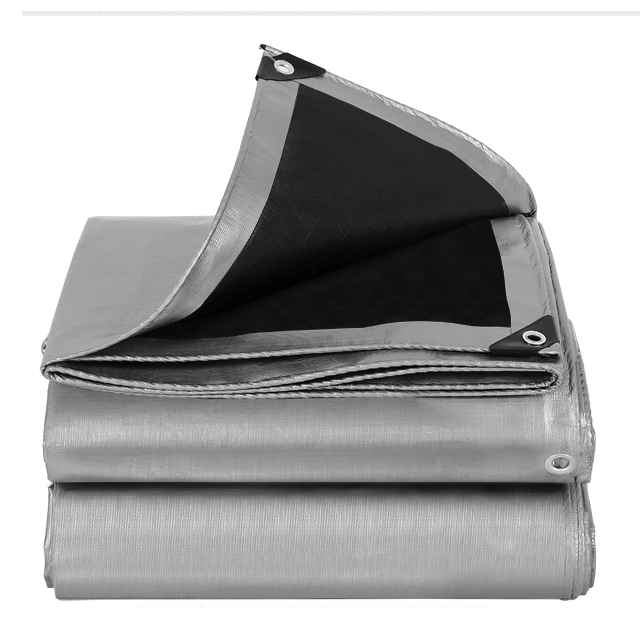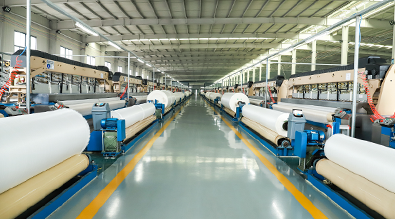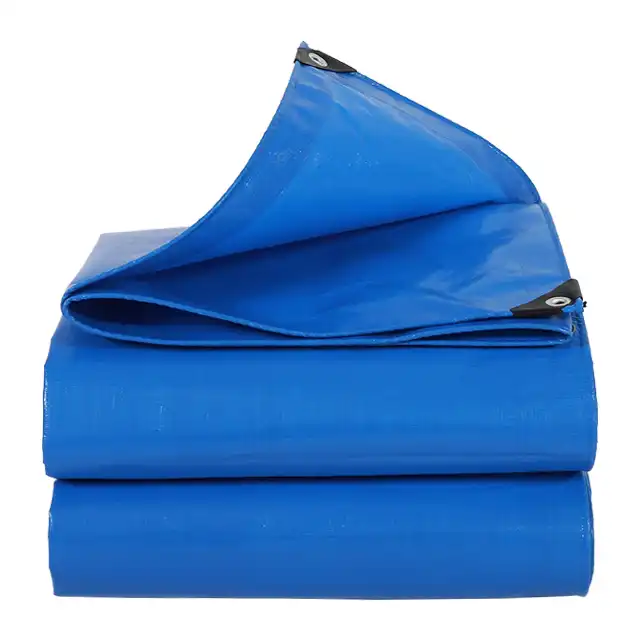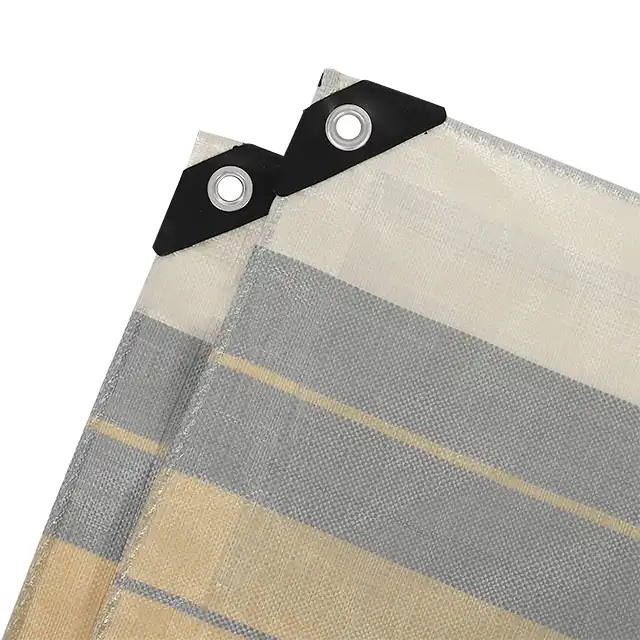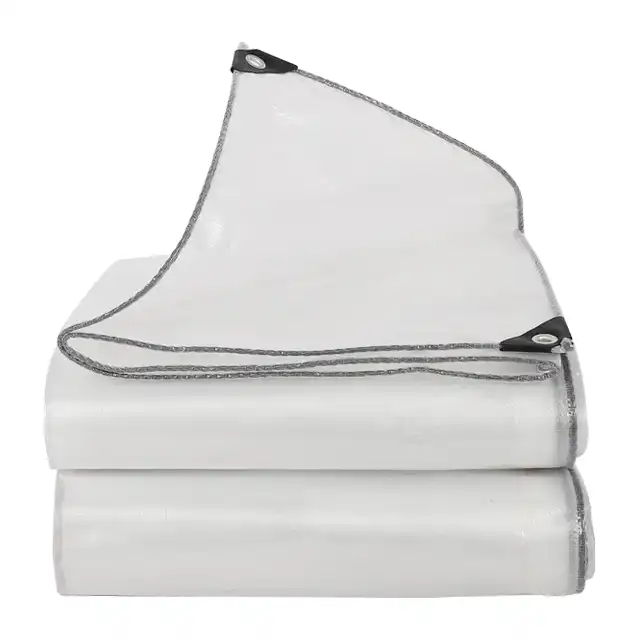Pros and Cons of Different Types of Tarpaulins
Are you facing the frustrating challenge of choosing the right protective covering for your valuable equipment, only to find that one size doesn't fit all applications? Understanding the various tarpaulin types available in the market is crucial for making informed purchasing decisions that can save both money and prevent costly damage to your assets. This comprehensive guide explores the advantages and limitations of different tarpaulin materials, helping you identify the perfect solution for your specific protection needs while avoiding common selection mistakes that could compromise your investment.
Understanding Polyethylene Tarpaulin Types and Their Benefits
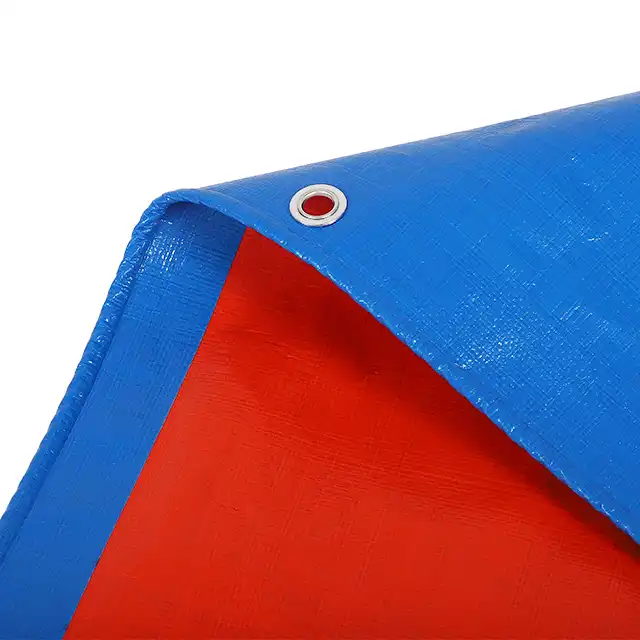
Polyethylene tarpaulins represent the most versatile and widely used category among tarpaulin types in today's market. These synthetic covers are manufactured from high-density polyethylene (HDPE) woven fabric combined with low-density polyethylene (LDPE) coating, creating a robust protective barrier suitable for numerous applications. The manufacturing process involves extruding polyethylene into fibers, weaving these fibers into fabric, and then laminating both sides with additional polyethylene layers for enhanced durability and waterproofing capabilities. The primary advantages of polyethylene tarpaulin types include exceptional water resistance, making them ideal for protecting materials from rain and moisture damage. Their lightweight nature facilitates easy handling and installation, while their flexibility allows for secure coverage of irregularly shaped objects. Modern polyethylene tarps feature UV treatment ranging from 1% to 7%, providing substantial protection against harmful solar radiation that can cause material degradation and color fading over extended exposure periods. However, polyethylene tarpaulin types also present certain limitations that users must consider. While they offer excellent short-term protection, their lifespan may be shorter compared to premium materials like PVC or canvas under extreme weather conditions. Additionally, cheaper polyethylene variants may lack adequate UV stabilization, leading to brittleness and cracking after prolonged sun exposure. Despite these considerations, the cost-effectiveness and versatility of polyethylene tarpaulin types make them the preferred choice for general-purpose applications.
-
Heavy-Duty Polyethylene Tarpaulin Specifications
Professional-grade polyethylene tarpaulin types feature enhanced construction specifications designed for demanding applications. These heavy-duty versions typically range from 65gsm to 280gsm in weight, with mesh counts varying from 10x10 to 14x14 for optimal strength-to-weight ratios. The fabric thickness ranges from 7 to 12 mil, providing robust protection against punctures and tears while maintaining flexibility for easy deployment and storage. Advanced polyethylene tarpaulin types incorporate high-strength yarn construction that delivers superior tensile strength and tear resistance compared to standard versions. The dual-side lamination process ensures complete waterproofing, while specialized UV treatment formulations provide extended protection against solar degradation. These specifications make heavy-duty polyethylene tarps suitable for construction sites, agricultural applications, and transportation covers where reliability is paramount.
Canvas and Natural Fiber Tarpaulin Types Analysis
Canvas tarpaulin types represent traditional protective covering solutions manufactured from natural cotton fibers or cotton-polyester blends. These breathable materials have served various industries for decades, offering unique advantages that synthetic alternatives cannot replicate. Canvas tarps excel in applications requiring air circulation while maintaining protection from light moisture and dust contamination. The breathability characteristic of canvas tarpaulin types makes them particularly valuable for covering items that require ventilation to prevent condensation buildup and mold formation. Agricultural applications benefit significantly from canvas covers, as they allow crops and feed to maintain optimal moisture levels while protecting against direct weather exposure. Additionally, canvas materials offer superior abrasion resistance compared to many synthetic tarpaulin types, making them suitable for covering rough surfaces and equipment with sharp edges. Nevertheless, canvas tarpaulin types present significant drawbacks that limit their applicability in certain scenarios. These natural fiber materials lack inherent waterproofing capabilities and require chemical treatment to achieve water resistance, which may degrade over time. Canvas tarps are considerably heavier than synthetic alternatives, making them more difficult to handle and transport. Furthermore, they are susceptible to mildew, rot, and insect damage when exposed to moisture for extended periods, requiring careful maintenance and storage practices.
-
Treated Canvas Performance Characteristics
Modern canvas tarpaulin types often receive specialized treatments to enhance their performance characteristics and extend their service life. Waterproofing treatments create a moisture barrier while attempting to maintain some breathability, though this balance can be challenging to achieve effectively. Fire-retardant treatments make certain canvas tarpaulin types suitable for applications near heat sources or in environments where fire safety is a primary concern. Despite these treatments, canvas tarpaulin types generally require more maintenance than synthetic alternatives. Regular inspection for signs of treatment degradation, proper drying before storage, and periodic re-treatment may be necessary to maintain optimal performance. Users must weigh these maintenance requirements against the specific benefits that canvas materials provide for their particular applications.
PVC Tarpaulin Types: Premium Protection Solutions
PVC (polyvinyl chloride) tarpaulin types represent the premium segment of synthetic protective covers, offering superior durability and performance characteristics compared to most other materials. These high-performance covers feature a polyester fabric base coated with PVC layers on both sides, creating an exceptionally strong and waterproof barrier suitable for the most demanding applications. The outstanding advantages of PVC tarpaulin types include exceptional tear strength, puncture resistance, and complete waterproofing capabilities that surpass other tarpaulin types. These materials demonstrate superior UV resistance, maintaining their structural integrity and color stability even under intense solar exposure over extended periods. PVC tarps can withstand temperature extremes, from arctic conditions to high-heat environments, without compromising their protective capabilities. PVC tarpaulin types also offer excellent chemical resistance, making them suitable for industrial applications where exposure to oils, acids, or other corrosive substances may occur. Their smooth surface facilitates easy cleaning and maintenance, while their high tensile strength allows for secure fastening under high-wind conditions. These characteristics make PVC tarpaulin types the preferred choice for long-term installations and critical protection applications. owever, PVC tarpaulin types come with certain disadvantages that must be considered. Their premium construction results in significantly higher costs compared to polyethylene or canvas alternatives, potentially making them economically unfeasible for temporary or low-value applications. The weight of PVC materials exceeds that of polyethylene tarpaulin types, requiring more robust support structures and making manual handling more challenging.
-
Industrial-Grade PVC Applications
Industrial applications particularly benefit from the superior performance characteristics of PVC tarpaulin types. These materials excel in environments where chemical resistance, extreme durability, and long-term reliability are essential. Transportation companies utilize PVC covers for protecting valuable cargo during long-distance shipping, while construction companies rely on them for equipment protection in harsh job site conditions. The longevity of PVC tarpaulin types often justifies their higher initial cost through reduced replacement frequency and lower total cost of ownership. Their resistance to environmental degradation makes them suitable for permanent or semi-permanent installations where other tarpaulin types would require frequent replacement.
Mesh and Specialized Tarpaulin Types
Mesh tarpaulin types serve unique applications where wind resistance and partial visibility are important considerations. These perforated materials typically feature openings ranging from 20% to 70% of the total surface area, allowing air passage while providing protection from debris and reducing wind load on support structures. The primary advantage of mesh tarpaulin types lies in their ability to provide protection without creating significant wind resistance. This characteristic makes them ideal for scaffolding covers, construction site barriers, and privacy screens where wind load reduction is crucial for structural safety. Mesh materials also allow natural light penetration while providing shade, making them suitable for outdoor events and agricultural shade applications. Construction sites benefit significantly from mesh tarpaulin types as debris containment solutions that don't create dangerous wind sail effects on scaffolding and temporary structures. The partial visibility through mesh materials allows for safety monitoring while maintaining protection from falling objects and dust control. However, mesh tarpaulin types provide limited protection against weather elements compared to solid tarpaulin types. Rain, snow, and fine particles can pass through the perforations, limiting their effectiveness for complete weather protection. Additionally, the specialized nature of mesh materials often results in higher costs and limited availability compared to standard tarpaulin types.
-
Specialized Application Considerations
Beyond standard mesh configurations, specialized tarpaulin types include fire-retardant variants, anti-static materials, and food-grade options designed for specific industry requirements. Fire-retardant tarpaulin types undergo chemical treatments that reduce their flammability, making them suitable for applications near heat sources or in environments with strict fire safety regulations. Anti-static tarpaulin types feature specialized treatments or conductive fibers that prevent static electricity buildup, making them essential for protecting electronic equipment or in environments where static discharge could create safety hazards. Food-grade tarpaulin types meet specific regulatory requirements for materials that may come into contact with food products during transportation or storage.
Comparing Durability and Cost-Effectiveness Across Tarpaulin Types
When evaluating different tarpaulin types, understanding the relationship between initial cost, expected lifespan, and performance characteristics becomes crucial for making economically sound decisions. Polyethylene tarpaulin types typically offer the lowest initial cost but may require more frequent replacement in demanding applications, potentially increasing long-term expenses. PVC tarpaulin types command premium pricing but often provide the longest service life and best performance in challenging conditions. The cost per year of service may actually favor PVC materials in applications requiring durability and reliability over extended periods. Canvas tarpaulin types fall between these extremes, offering moderate initial costs with good performance in specific applications where their unique characteristics provide value. The cost-effectiveness analysis must consider not only material costs but also installation, maintenance, and replacement expenses. Lightweight polyethylene tarpaulin types may reduce installation costs due to easier handling, while heavy-duty materials might require more robust support structures. Maintenance requirements vary significantly among tarpaulin types, with some requiring regular treatments or inspections to maintain optimal performance. Environmental factors significantly impact the comparative performance of different tarpaulin types. UV exposure, temperature extremes, chemical exposure, and mechanical stress all affect material longevity differently. Understanding these factors helps in selecting the most appropriate tarpaulin type for specific environmental conditions and use patterns.
-
Long-Term Value Assessment
Professional users often find that investing in higher-quality tarpaulin types provides better long-term value despite higher initial costs. The reduced frequency of replacement, lower maintenance requirements, and improved protection reliability often justify premium material selection. However, temporary or low-risk applications may benefit from more economical tarpaulin types that provide adequate protection without unnecessary expense. The decision process should include consideration of replacement logistics, disposal costs, and environmental impact. Some tarpaulin types offer better recyclability or environmental friendliness, which may influence selection decisions for environmentally conscious organizations or applications with specific sustainability requirements.
Conclusion
Selecting the appropriate tarpaulin type requires careful consideration of application requirements, environmental conditions, and budget constraints. Each material category offers distinct advantages and limitations that make them suitable for specific use cases. Understanding these characteristics enables informed decision-making that optimizes protection effectiveness while managing costs appropriately.
Cooperate with Linyi Shengde Plastic Co., Ltd.
As a leading enterprise in the Chinese PE tarpaulin field since 2003, Linyi Shengde Plastic Co., Ltd. combines two decades of manufacturing expertise with cutting-edge production capabilities to deliver superior tarpaulin solutions. Our state-of-the-art facility spans 60,000 square meters and houses over 400 Korea-imported automatic water-jet looms, 30+ high-tech extruding machines, and advanced coating equipment capable of producing fabrics up to 5 meters wide without joints.
Our commitment to quality excellence is demonstrated through ISO 9001:2015 certification and partnerships with prestigious international organizations including UNHCR, IOM, ICRC, and UNICEF. With over 1000 skilled workers and daily production capacity exceeding 100 tons, we ensure reliable supply and consistent quality for projects of any scale. Our comprehensive R&D capabilities have yielded breakthrough innovations including ultra-wide braiding machines, fire-prevention technologies, and enhanced waterproofing solutions that set new industry standards.
Looking for a reliable China tarpaulin types factory that delivers High Quality tarpaulin types at competitive tarpaulin types price points? As a trusted China tarpaulin types supplier and China tarpaulin types manufacturer, we offer comprehensive China tarpaulin types wholesale solutions with tarpaulin types for sale across diverse applications. Our global export experience spanning 30+ countries ensures we understand international quality standards and delivery requirements. Contact us at info@shengdetarp.com for customized solutions that meet your specific protection needs and experience why industry leaders choose Shengde for their critical applications.
FAQ
Q: What is the most durable tarpaulin type for outdoor use?
A: PVC tarpaulins offer the highest durability for outdoor applications, providing superior UV resistance, tear strength, and weatherproofing compared to other tarpaulin types.
Q: Which tarpaulin types are best for temporary construction covers?
A: Heavy-duty polyethylene tarpaulins provide the optimal balance of cost-effectiveness, weather protection, and ease of installation for temporary construction applications.
Q: How do I determine the right weight specification for tarpaulin types?
A: Choose weights between 100-180gsm for general applications, while heavy-duty uses requiring maximum durability benefit from 200gsm+ specifications with enhanced UV treatment.
Q: What maintenance do different tarpaulin types require?
A: Polyethylene and PVC tarpaulin types require minimal maintenance beyond regular cleaning, while canvas types need periodic waterproofing treatment and careful drying before storage.
References
1. "Tarpaulin Materials and Construction Standards" - International Association of Protective Cover Manufacturers
2. "Comparative Analysis of Synthetic vs Natural Fiber Protective Covers" - Journal of Industrial Textiles, Smith, J.R.
3. "UV Degradation and Weathering Resistance in Plastic Tarpaulins" - Materials Science and Engineering Review, Chen, L.M.
4. "Fire Safety and Chemical Resistance Properties of Industrial Tarpaulin Materials" - Safety Engineering Quarterly, Rodriguez, M.A.
